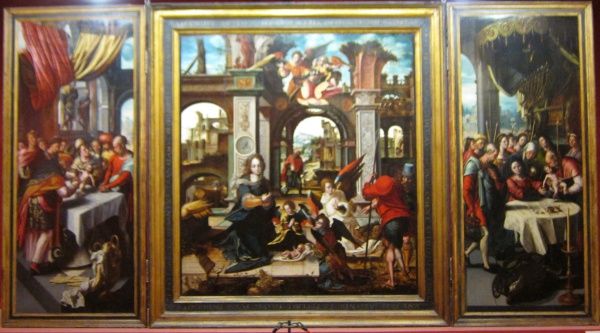Facts About Triptych of Nava and Grimon
The "Triptych of Nava and Grimon" is an exquisite Flemish painting from 1546. The central panel is attributed to Pieter Coecke, while the side panels were created by his workshop. This remarkably intricate piece is housed at the Museo Municipal de Bellas Artes in Santa Cruz de Tenerife, located in the Canary Islands.
In the 16th century, Tomás Grimón, a notable figure in Tenerife, brought the triptych from Brussels to his private chapel in San Cristóbal de La Laguna. Over time, the panels were separated: the side panels ended up in the chapel of San Clemente while the central panel was housed in the Palacio de Nava, making the triptych a shared treasure of the Nava and Grimón families. In 1969, the panels were taken down for restoration and later acquired by the CEPSA Foundation.
This triptych is a stunning depiction of scenes from Christ's early life. The central panel illustrates the Nativity, the left panel portrays the Circumcision of Jesus, and the right panel features the Presentation of Jesus at the Temple. The reverse sides of these panels display the Annunciation of the Virgin Mary and the Archangel Gabriel.
What makes this painting truly special is its combination of elongated figures and architectural details inspired by Vitruvius and Sebastiano Serlio. The rich colors and archaic techniques reflect Coecke's Antwerp Mannerist roots, as well as influences from Italy and Turkey. In 1998, the triptych was showcased in a Madrid exhibition entitled "Masterpieces Recovered" underscoring its significance as one of the most important Flemish artworks.

 Morocco
Morocco